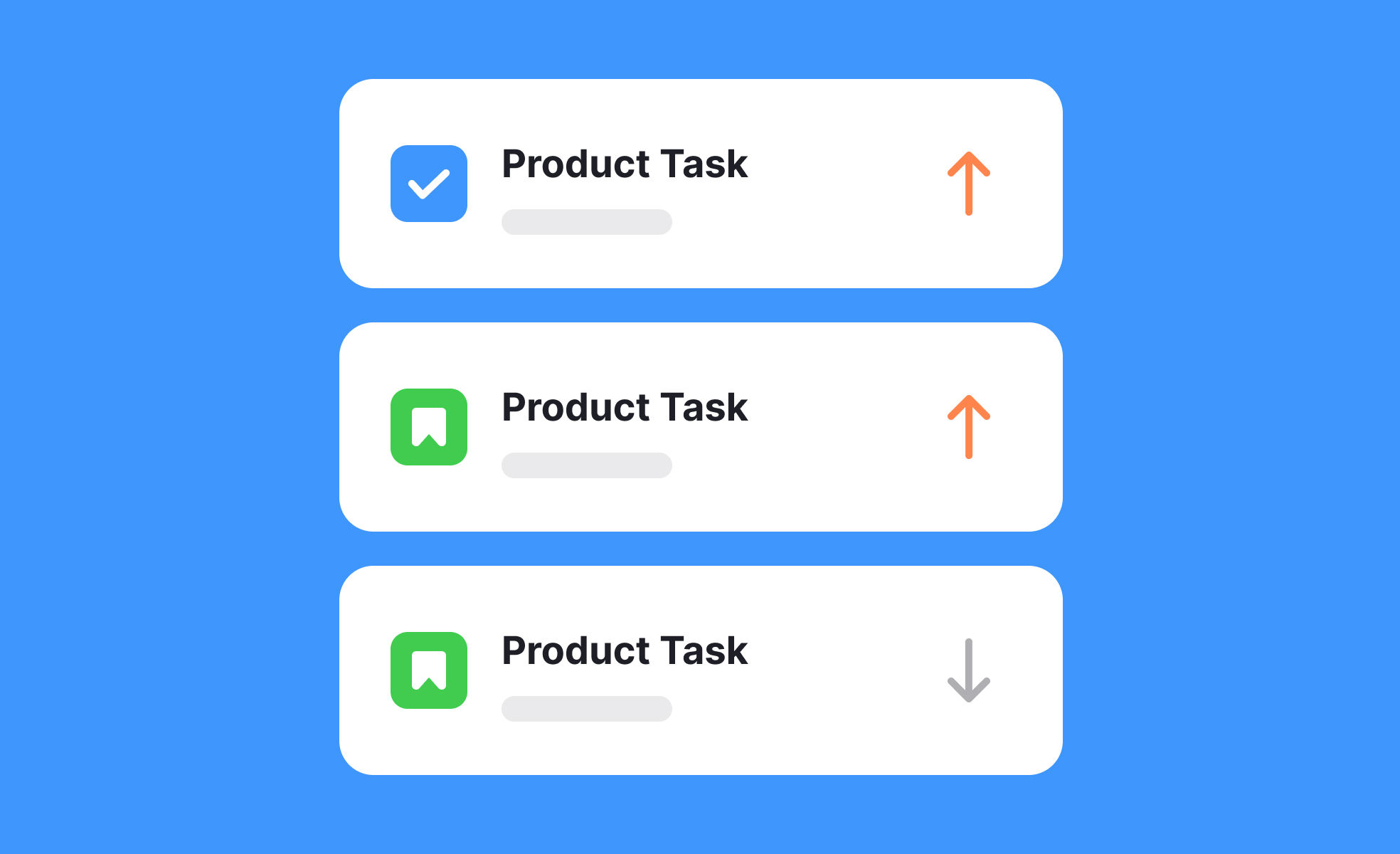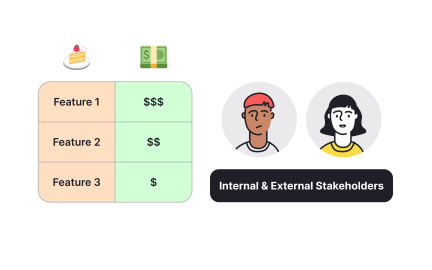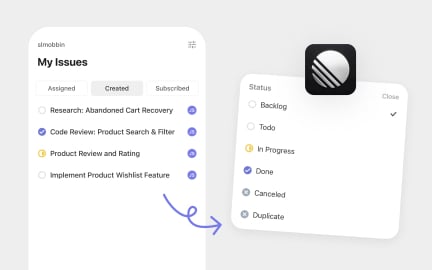Backlog
A backlog is a dynamic list of upcoming product tasks, bugs, or features, organized by priority to guide team focus and planning.

What is Backlog?
Your development team lacks clear priorities because feature requests, bug fixes, and improvements accumulate in disorganized lists without systematic prioritization, leading to scattered development effort and missed opportunities to focus on high-impact work that serves strategic objectives.
Most teams manage development work through informal task lists and email requests without structured prioritization frameworks, missing opportunities to align development effort with business value and user needs that drive competitive success and customer satisfaction.
A backlog is a prioritized list of features, improvements, and fixes that serves as the single source of truth for development work, enabling systematic resource allocation and strategic focus while providing transparency about development priorities and timeline expectations.
Teams managing effective backlogs achieve 50% better development focus, 40% faster feature delivery, and significantly improved stakeholder alignment because development priorities are clear and based on systematic evaluation rather than random requests and organizational politics.
Think about how successful agile development teams use product backlogs to maintain focus on highest-value features, or how product managers use backlog prioritization to ensure development resources serve strategic objectives rather than just responding to immediate requests.
Why Backlog Management Matters for Development Success
Your development productivity suffers because teams don't have clear understanding of what to work on next, leading to context switching, duplicated effort, and resources spent on low-impact activities that don't serve strategic objectives or customer needs effectively.
The cost of poor backlog management compounds through every development decision that could be optimized for better results. You get scattered development effort, stakeholder confusion about priorities, missed opportunities to deliver high-value features, and competitive disadvantage when development doesn't focus strategically.
What effective backlog management delivers:
Better development focus and strategic alignment because prioritized backlogs ensure development effort serves business objectives and customer needs rather than just completing available tasks without strategic evaluation and resource optimization.
When backlogs are managed systematically, development teams can focus on high-impact work rather than constantly deciding what to work on without clear priorities and strategic guidance.
Enhanced stakeholder communication and expectation management through transparent prioritization that shows what will be delivered when, enabling realistic planning and reducing conflicts about development priorities and timeline expectations.
Improved development velocity and delivery predictability because clear priorities eliminate context switching and enable focused development effort that generates consistent progress rather than scattered attention across too many initiatives.
Stronger product quality and user satisfaction as backlog prioritization ensures development resources focus on features and fixes that create the most user value rather than just interesting technical challenges.
More efficient resource allocation and timeline planning through systematic prioritization that enables accurate estimation and resource planning based on strategic importance rather than development convenience or stakeholder pressure.
Advanced Backlog Management Strategies
Data-Driven Backlog Prioritization: Use customer behavior analytics, business metrics, and market research to inform backlog priorities rather than just stakeholder opinions and development team preferences without evidence-based evaluation.
Strategic Backlog Planning and Roadmap Integration: Connect backlog management to longer-term product strategy and roadmap planning rather than just short-term development prioritization without strategic context and market positioning.
Stakeholder-Centric Backlog Communication: Develop backlog communication strategies that serve different stakeholder information needs rather than technical development focus that might not address business planning and strategic decision-making requirements.
Backlog grooming typically occurs once per sprint, but frequency may vary depending on team size and workflow.
No. Low-priority or outdated items may eventually be removed if they no longer align with the product's goals.
Yes, stakeholders can suggest items, but the product manager is responsible for reviewing and prioritizing them.
Step 1: Establish Backlog Structure and Item Types (Week 1)
Define categories for different types of work including new features, improvements, bug fixes, and technical debt while establishing consistent format for describing backlog items with clear requirements and acceptance criteria.
This creates backlog foundation based on comprehensive work types rather than just feature requests without systematic organization that enables effective prioritization and resource allocation across different development needs.
Step 2: Implement Systematic Prioritization Framework (Week 1-2)
Use structured prioritization methods like business value scoring, user impact assessment, or frameworks like RICE to rank backlog items based on strategic importance rather than just stakeholder preferences and development convenience.
Focus prioritization on factors that actually drive business success and customer satisfaction rather than just interesting technical challenges or easy implementations that might not create proportional value.
Step 3: Create Regular Backlog Grooming and Refinement Processes (Week 2)
Schedule systematic backlog review sessions that add new items, update priorities based on changing conditions, and refine requirements for upcoming development work rather than letting backlogs become outdated wish lists.
Balance comprehensive backlog maintenance with development time efficiency to ensure grooming serves development effectiveness rather than becoming time-consuming overhead without proportional value.
Step 4: Integrate Backlog with Sprint Planning and Development Workflow (Week 2-3)
Connect backlog priorities to actual development work through sprint planning that selects highest-priority items based on team capacity and strategic objectives rather than just convenient development tasks.
Step 5: Monitor Backlog Performance and Stakeholder Satisfaction (Week 3)
Track whether backlog management improves development outcomes and stakeholder alignment rather than just maintaining organized lists that might not enhance development effectiveness and strategic focus.
This ensures backlog management generates development value rather than just organizational overhead that doesn't improve team productivity and strategic alignment measurably.
If backlog management doesn't improve development focus, examine whether prioritization reflects actual business value rather than just stakeholder preferences without strategic evaluation and customer impact consideration.
The Problem: Backlogs that become comprehensive wish lists rather than focused development priorities, making it difficult to identify what should actually be worked on next and what can be safely ignored.
The Fix: Limit backlog size and regularly remove items that don't meet prioritization criteria rather than accumulating every possible feature request without strategic evaluation and priority discipline.
The Problem: Backlog prioritization that changes constantly based on latest stakeholder requests rather than systematic evaluation of strategic importance and customer value that provides stable development direction.
The Fix: Establish clear prioritization criteria and change management processes rather than reactive backlog updates that disrupt development focus and create constant context switching without strategic justification.
The Problem: Backlog items that lack sufficient detail for development planning and estimation, leading to constant clarification requests and development delays when requirements aren't clear.
The Fix: Include clear requirements, acceptance criteria, and context in backlog items rather than just brief descriptions that don't provide development teams with information needed for accurate estimation and successful implementation.
Create backlog management approaches that enhance development effectiveness rather than just organized task lists that don't improve team productivity and strategic alignment significantly.
Recommended resources
Courses

HTML Foundations

Mentorship Mastery

CSS Foundations
Lessons

Navigating Trade-offs and Priorities

Agile Methodology








